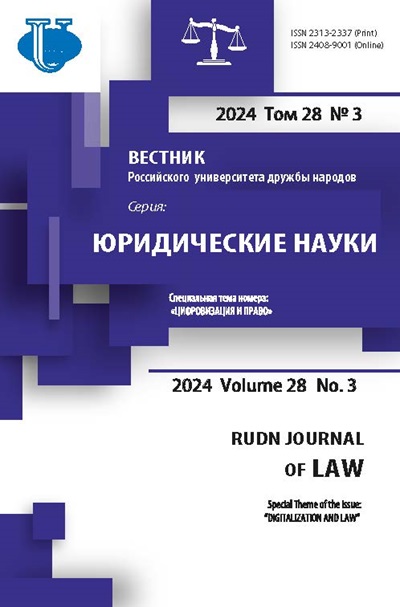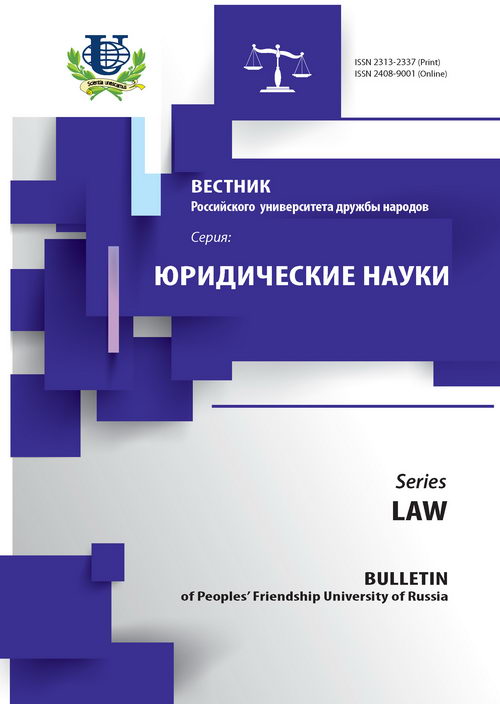Обязательные резервные требования Банка России: характеристика и механизм действия
- Авторы: Фролова Е.Е.1, Кармадонова Е.В.2, Зеленцов А.Б.1
-
Учреждения:
- Российский университет дружбы народов
- Байкальский государственный институт экономики и права
- Выпуск: № 2 (2015)
- Страницы: 79-92
- Раздел: Статьи
- URL: https://journals.rudn.ru/law/article/view/5878
Цитировать
Полный текст
Аннотация
Статья посвящена рассмотрению одного из ключевых инструментов денежно-кредитной политики, проводимой государствами - обязательным резервным требованиям, которые представляют собой инструмент монетарной политики, использующийся во многих странах мира, механизму их установления центральными банками, степени влияния на ликвидность банков и рост денежной массы. Подробно рассматриваются функции резервных требований, депонируемых на счетах Банка России. В статье приводится динамика нормативов обязательных резервов, анализируется «классическая» схема усреднения обязательных резервов. Авторы подразделяют резервируемые обязательства кредитных организаций на три категории: обязательства кредитной организации перед юридическими лицами-нерезидентами, которые состоят из обязательств перед юридическими лицами-нерезидентами (в том числе обязательства перед банками-нерезидентами), обязательств перед индивидуальными предпринимателями-нерезидентами, возникающие в соответствии с договорами банковского (корреспондентского) счета, договорами на привлечение денежных средств (кредитными, депозитными и иными договорами); обязательства кредитной организации перед физическими лицами, которые состоят из обязательств перед физическими лицами (резидентами и нерезидентами), возникающие в соответствии с договорами банковского вклада (в том числе удостоверенные сберегательными сертификатами), банковского счета; иные обязательства кредитной организации в валюте Российской Федерации и (или) в иностранной валюте. Авторы также приводят пример расчета данных для выполнения кредитной организацией обязанности по усреднению обязательных резервов. В материале затрагиваются практические вопросы механизма действия данного инструмента денежно-кредитной политики, порядка расчета резервов, регулирования Банком России обязательных резервов, а также анализируется нормативная база, регламентирующая различные аспекты выполнения кредитными организациями резервных требований.
Об авторах
Евгения Евгеньевна Фролова
Российский университет дружбы народов
Email: frolevgevg@mail.ru
Кафедра административного и финансового права Юридический институт
Елена Викторовна Кармадонова
Байкальский государственный институт экономики и права
Email: frolevgevg@mail.ru
Александр Борисович Зеленцов
Российский университет дружбы народов
Email: zelentsov51@mail.ru
Кафедра административного и финансового права Юридический институт
Список литературы
- Галкина М.В., Ермаков С.Л., Фролова Е.Е., Ястребов О.А. Экономические и правовые основы функционирования банковского сектора Российской Федерации. - Иркутск: Репроцентр, 2011.
- Положение Банка России от 16 июля 2012 г. № 385-П «О правилах ведения бухгалтерского учета в кредитных организациях, расположенных на территории Российской Федерации» // Вестник Банка России. - 2012. - № 56-57.
- Положение Банка России от 7 августа 2009 г. № 342-П «Об обязательных резервах кредитных организаций» // Вестник Банка России. - 2009. - № 55 (21 сент.).
- Указания Банка России от 22.12.2014 № 3501-У «О внесении изменений в Положение Банка России от 16.07.2012 № 385-П «О правилах ведения бухгалтерского учета в кредитных организациях, расположенных на территории Российской Федерации» // Вестник Банка России. - 2015. - № 9 (4 февр.).
- Указания Банка России от 26.09.2014 № 3395-У «О внесении изменений в Положение Банка России от 7 августа 2009 г. № 342-П “Об обязательных резервах кредитных организаций”» // Вестник Банка России. - 2014. - № 99.
- Федеральный закон «О банках и банковской деятельности» от 02.12.1990 № 395-1 (в ред. от 20.04.2015) // СЗ РФ. - 2015. - № 17 (27 апреля). - Ст. 2473.
- Федеральный закон «О внесении изменений в отдельные законодательные акты Российской Федерации» от 29 декабря 2014 г. № 484-ФЗ // СЗ РФ. - 2015. - № 1 (5 янв.). - Ст. 37.
- Федеральный закон «О Центральном банке Российской Федерации (Банке России)» от 10 июля 2002 г. № 86-ФЗ // СЗ РФ. - 2002. - № 28. - Ст. 2790.















